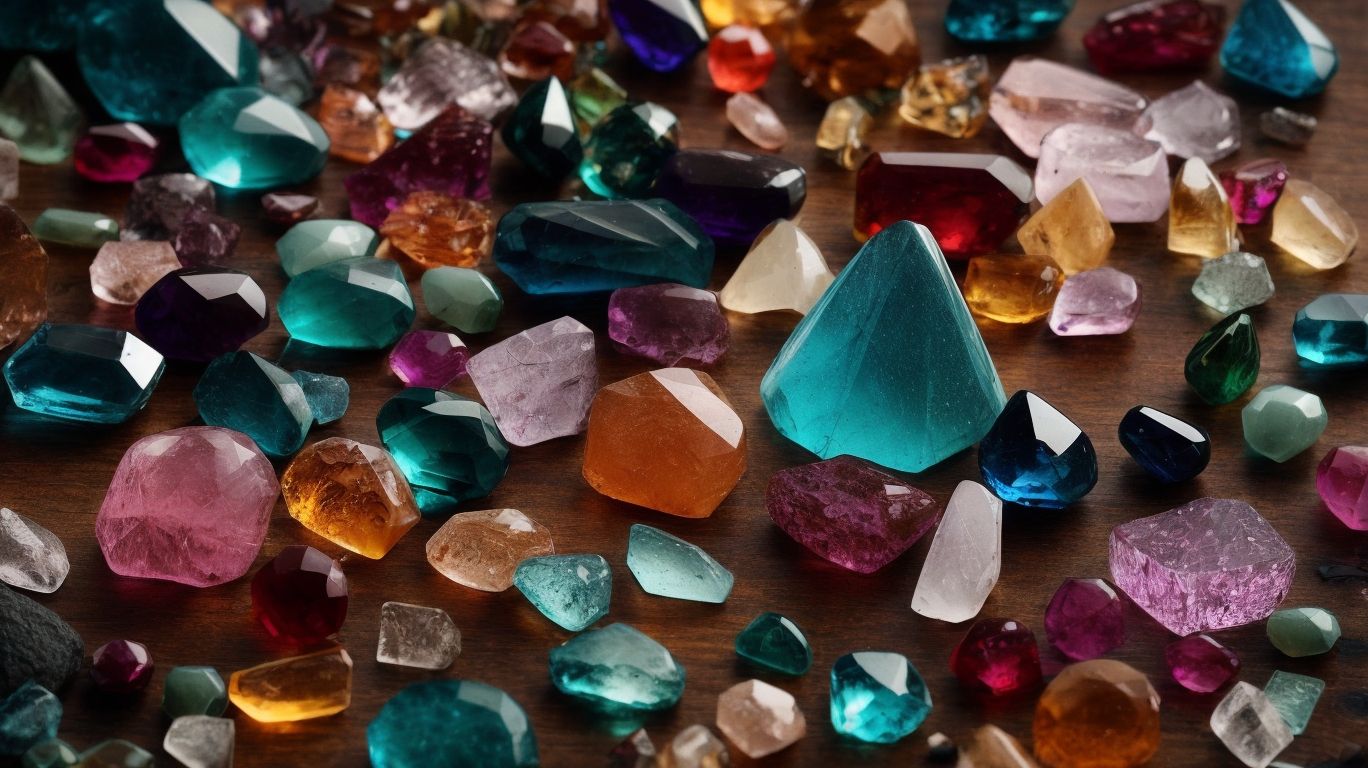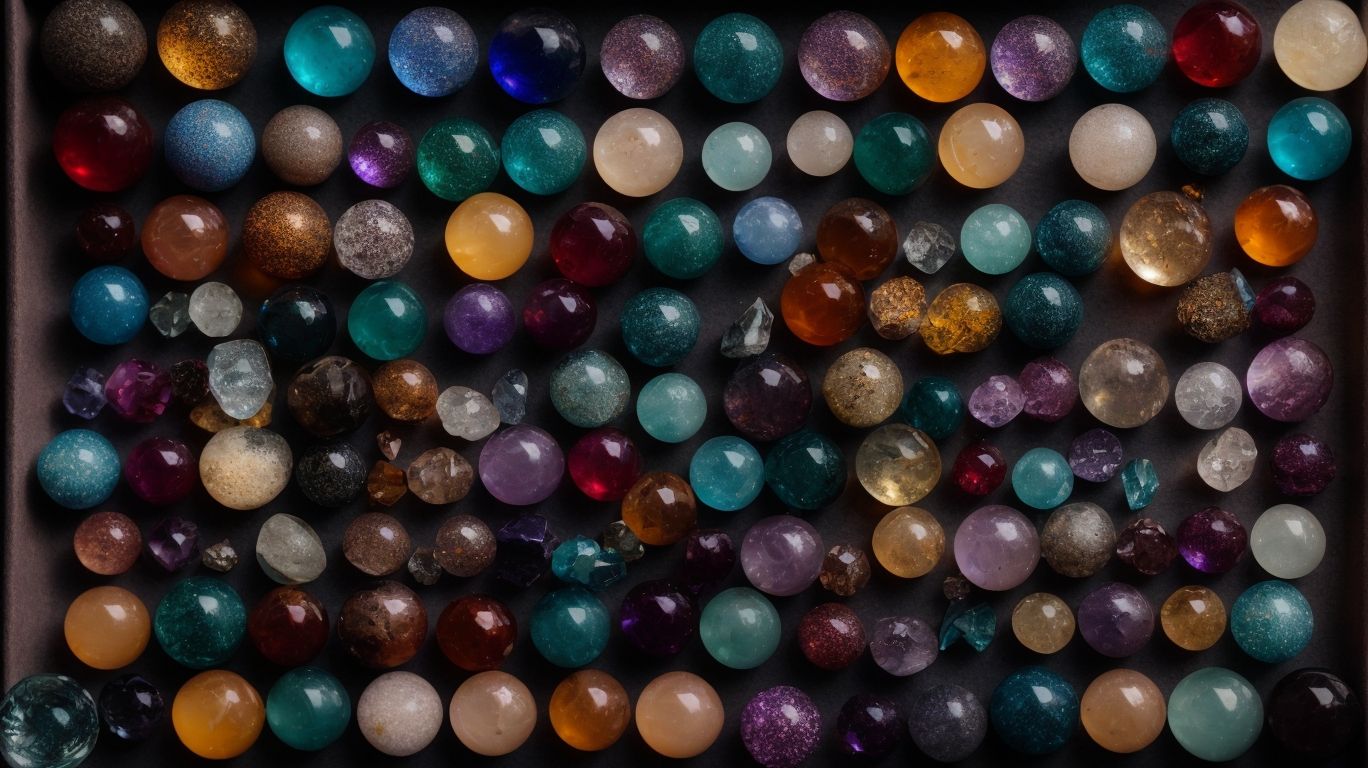
Crystals 101: A Beginner’s Guide to Understanding Crystal Basics
Welcome to “Crystals 101: A Beginner’s Guide to Understanding Crystal Basics,” your comprehensive introduction to the fascinating world of crystals. In this article, we will delve into the fundamental aspects of crystals, exploring their nature, formation, physical properties, and diverse uses. We will also uncover the different types of crystals, their unique structures, and the factors to consider when choosing the right crystal for your needs. We will uncover the healing properties of crystals, their role in technology, and how to effectively clean, charge, and utilize them for meditation and healing purposes.
Whether you’re a newcomer to the world of crystals or seeking to expand your knowledge, this guide is designed to provide valuable insights and practical tips for incorporating crystals into your life. Join us as we embark on an enlightening journey into the captivating realm of crystals.
What Are Crystals?
Crystals, in the context of this beginner’s guide, are natural formations of minerals with distinct metaphysical properties and an inherent ability to harness energy for healing purposes.
They are renowned for their vibrational frequencies, which are believed to interact with the body’s energy centers, or chakras, promoting balance and well-being. Each crystal embodies unique characteristics, such as quartz’s amplification and purification properties, amethyst’s calming effects, and citrine’s ability to enhance creativity and abundance.
Throughout history, cultures worldwide have utilized crystals for their powerful healing energies, considering them as aids in meditation, spiritual practices, and holistic therapies.
What Are the Different Types of Crystals?
The world of crystals encompasses a diverse array of types, including widely recognized varieties such as Clear Quartz, Rose Quartz, Amethyst, and Citrine, each with its unique crystal shapes, vibrations, and associations with chakras.
Clear Quartz, known as the “master healer,” is characterized by its clear and transparent appearance and is associated with amplifying energy and intention. Rose Quartz, with its gentle pink color, is linked to love and compassion, promoting emotional healing and harmony. Amethyst, with its deep purple hue, is associated with spiritual growth and intuition, while Citrine, often regarded as the “merchant’s stone,” is linked to abundance and prosperity.
Each crystal also holds specific connections to different chakras and vibrational frequencies, influencing their healing properties and uses.
How Do Crystals Form?
The formation of crystals involves a fascinating process wherein minerals undergo specific natural conditions and molecular arrangements to develop their unique crystal structure, leading to the growth of intricate and diverse crystalline formations.
These natural conditions, such as temperature, pressure, and chemical compositions, play a crucial role in determining the characteristics of the resulting crystals. As the molecules align in a repeating pattern, they form the distinct geometric shapes that are the hallmark of crystals.
The growth mechanism involves the gradual addition of molecular units to the crystal lattice, expanding its size and complexity over time. Understanding the structure and growth mechanisms of crystals is essential in various scientific, industrial, and aesthetic applications, allowing for the manipulation and utilization of their unique properties.
What Are the Physical Properties of Crystals?
The physical properties of crystals encompass their distinctive crystal structure, lattice formations, and relative hardness levels, often evaluated through the well-established Mohs Scale of Hardness, contributing to their unique characteristics and applications.
Crystals are comprised of a repeating, symmetrical arrangement of atoms or molecules, giving them their distinct geometric shapes. The lattice patterns within crystals determine their physical properties and contribute to their durability. The Mohs Scale of Hardness, a qualitative scale, measures the scratch resistance of minerals, with talc at the bottom as the softest and diamond at the top as the hardest, providing a standardized method for assessing the relative hardness of crystals.
What Is Crystal Structure?
Crystal structure refers to the specific arrangement of atoms and molecules within a crystal, dictating its inherent properties and giving rise to diverse formations such as crystal clusters and crystal points, each with its distinct attributes and metaphysical properties.
These unique formations manifest in various types of crystals, where crystal clusters bring together multiple crystal points, creating a harmonious synergy of energies. The geometric layout of crystal points contributes to their ability to focus and amplify energy, making them popular tools for healing and meditation practices.
The intricate internal patterns of crystal clusters and the sharp terminations of crystal points play a significant role in their metaphysical applications, often believed to enhance spiritual growth and energy alignment.
What Is Crystal Lattice?
The crystal lattice represents the repeating three-dimensional pattern of atoms within a crystal, influencing its terminology, uses, and associated benefits that make crystals valuable tools for various metaphysical practices and holistic applications.
It is a defining feature of crystals, contributing to their unique properties and resilience. The terminology often includes terms such as unit cell, lattice points, and coordination number, which help in understanding the structure and behavior of crystals.
Crystals find diverse uses, from technological applications such as in electronics and laser technology to natural therapies like crystal healing and meditation. Their associated benefits encompass spiritual alignment, energy balancing, and mental clarity, making them sought after for personal and environmental well-being.
What Is Mohs Scale of Hardness?
The Mohs Scale of Hardness serves as a valuable tool for assessing and comparing the relative hardness of different crystals, providing insights into their meanings, types, and the geological processes contributing to their formation and structure.
This widely used scale, developed by Friedrich Mohs in 1812, ranges from 1 (the softest) to 10 (the hardest), allowing gemologists and crystal enthusiasts to understand the scratch resistance of various minerals. Understanding the hardness of crystals is significant as it can help in identifying their suitability for specific uses such as in jewelry, industrial applications, and even historical and cultural significance. The scale is also pivotal in understanding the geological processes that influence crystal formation and the structural compositions of different types of crystals.
How Are Crystals Used?
Crystals are extensively utilized for various purposes, including spiritual practices, holistic therapies, and energy work, owing to their inherent energy and metaphysical properties that form the foundation of crystal healing and therapy.
These versatile gems are believed to facilitate emotional and physical healing, restore balance within the body, and enhance spiritual growth. Their use extends to meditation, chakra balancing, and promoting overall well-being. It’s remarkable how cultures worldwide have long revered crystals for their potent energies and connection to the Earth.
From amethyst for calming energies to quartz for clarity and focus, crystals offer a wealth of applications for those on a spiritual or healing journey.
What Are the Healing Properties of Crystals?
The healing properties of crystals are rooted in their metaphysical attributes, contributing to the creation of crystal grids and the practice of crystal therapy, which harnesses the innate energies and vibrations of crystals for therapeutic purposes.
These powerful elements are believed to interact with the body’s energy field, promoting balance, clarity, and inner peace. The concept of crystal grids involves arranging specific types of crystals in a pattern to amplify their individual energies and create a unified, harmonious force.
Crystal therapy integrates the use of crystals to support physical, emotional, and spiritual well-being, aligning with the belief that each crystal has its own unique energy that can influence a person’s energy fields.
How Are Crystals Used in Technology?
Crystals find diverse applications in technology, contributing to the creation of crystal energy fields, innovative uses, and the production of crystal jewelry that leverages their inherent benefits for aesthetic and functional purposes.
These unique properties of crystals have led to their integration in various technological devices, such as lasers, semiconductors, and communication systems. In energy fields, crystals are used to amplify and balance energies, creating a harmonious environment. Their varied uses also extend to alternative medicine, where they are believed to have healing properties and are incorporated into holistic practices.
Crystal jewelry is not only admired for its visual appeal but is also worn for its believed abilities to promote positive energy and well-being.
How to Choose a Crystal?
Selecting the right crystal involves considering various factors such as personal resonance, care requirements, meanings, and the diverse types available, ensuring that the chosen crystal aligns with the individual’s intentions and preferences.
Understanding the personal resonance with a crystal involves being aware of one’s own energy and what feels harmonious. Careful attention to the care requirements, such as cleansing and charging methods, supports maintaining the crystal’s effectiveness.
Exploring the meanings and symbolism associated with different crystals can provide insight into their potential impact on one’s life. Understanding the different types of crystals, from quartz and amethyst to jasper and obsidian, allows individuals to find the one that best suits their needs and goals.
What Factors Should Be Considered When Choosing a Crystal?
The process of choosing a crystal involves evaluating factors such as selection criteria, care practices, setting intentions, and understanding the formation of crystals, all of which contribute to the personalized and meaningful selection of crystals for various purposes.
Consideration of the crystal’s energy resonance with your own is essential when deciding on a crystal. Once selected, its care involves methods like cleansing, charging, and regular maintenance.
Setting clear intentions for your crystal enhances its purpose and effect. The formation of crystals, such as their growth patterns and structural composition, provides insights into their energy and healing properties.
What Are the Most Popular Crystals and Their Meanings?
Several crystals have gained popularity due to their meaningful associations and diverse properties, including their magical attributes that resonate with individuals seeking specific energies, making them revered choices for various metaphysical practices and rituals.
These enchanting gemstones, such as amethyst which symbolizes tranquility and intuition or rose quartz known for its ability to attract love and promote emotional healing, offer a compelling allure in the realm of crystal healing. Other renowned crystals like clear quartz, believed to amplify energy and cleanse negativity, and citrine, associated with abundance and manifestation, further exemplify the profound impact that crystals can have on one’s well-being. Their unique vibrations and metaphysical properties continue to captivate spiritual enthusiasts and practitioners seeking to harness their mystical strengths.
How to Clean and Charge Crystals?
Properly cleansing and charging crystals is essential to maintain their energy purity, often achieved through techniques such as cleansing rituals and intentional programming, ensuring that the crystals remain vibrant and aligned with their intended uses and benefits.
When cleansing crystals, one can use methods like running them under cool water, smudging with sage or using sound vibrations.
To charge them, placing them in sunlight or moonlight, burying them in the earth, or using other crystals are common techniques.
Programming crystals with specific intentions can enhance their ability to work towards desired goals, such as promoting love, protection, or clarity.
These powerful tools are widely utilized in meditation, energy healing, and spiritual practices for their inherent abilities to balance, cleanse, and revitalize the energy around them.
How to Use Crystals for Meditation and Healing?
Incorporating crystals into meditation practices and healing rituals involves setting intentions, utilizing crystal grids, and engaging in therapeutic methods, harnessing the unique energies of crystals to facilitate profound meditative experiences and holistic healing.
When using crystals in meditation and healing, individuals often focus on directing their intentions towards specific goals or desires, allowing the crystals to amplify and support these intentions. Crystal grids, or arrangements of crystals designed to enhance their collective energies, are frequently employed to create a harmonious and balanced environment for meditation and healing.
The principles of crystal therapy emphasize the use of specific crystals to address physical, emotional, and spiritual imbalances, aligning with the individual’s energy field for overall well-being and restoration.




No Comments